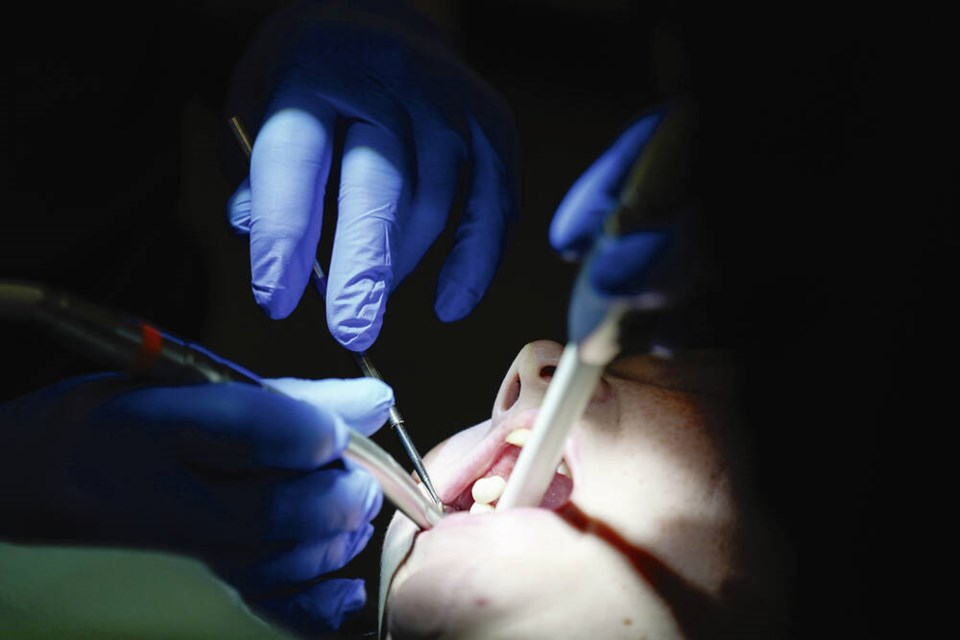A commentary by a recently retired dentist who treated patients in British Columbia for 43 years.
Having been a small business owner, I am keenly aware of the cost and stresses of running a dental practice. The cost of incorporating new technology, X-ray machines, scanners, computers, rent and wages all enter into the stresses involved. All these costs need to be passed along to our patients/clients. That’s how any small business survives.
Payment is made either directly from a person’s bank account or with the aid of private dental insurance or government dental insurance. Dental insurance is not free. Private insurance is paid by union dues or employers’ contributions or both. Government dental insurance is paid for by the taxpayers, you and me.
If the government models its dental health benefit plan on the First Nations plan, then the fees paid for the service will only be about 85 per cent of the recommended rate. Note that it takes 100 per cent of recommended fees to run a profitable clinic.
But the government will pay 85 per cent. If a dentist had a practice where the majority of treatments were government payment at 66-75 per cent of the usual fee schedule, the dentist would soon have to close their practice.
During my dental career, I was one of only two or three dentists north of Victoria to actively welcome First Nations patients and patients with disability or welfare government coverage.
I was reimbursed by the government substantially less than the now going rate of 85 per cent. I could not afford to have an entire practice of government reimbursement patients. It was not economically viable, but it was my way of “giving back.”
Now specifically rebutting the Feb. 10 commentary, “Seniors deserve a chance to keep their teeth:”
The government agreed to payment for her crown (at 85 per cent of regular fees).
Because there are third-party lab costs that the dentist pays full price for, there is less money left over to pay the office overhead bills. The dentist can’t afford to run a business that way.
No wonder it took her so long to get a dentist to do the work. Obviously, they were “giving back” as well. I hope she profusely thanked the dentist for basically working for a drastically reduced fee — maybe for free.
She said she has a pile of broken teeth. Is she expecting the government to pay for crowns on all these teeth (at up to $2,000 apiece), and the dentist to absorb the loss of income — or perhaps she is hoping for a dozen implanted teeth? One implant plus a crown may cost more than $5,000. The taxpayer would have to pay for this.
There has always been a safety net for people whose health is at risk. I guarantee, this is not the “Cadillac” dentistry she is expecting, but it will keep her functional.
It may mean extractions and a partial or full dentures and yes, she may feel that her quality of life is affected, but she can still eat. In past generations, that was a good standard of care. It sounds like she feels that she is owed more by the taxpayers.
Her dental issues are not due to decades of provincial government neglect. Her dental issues could be somewhat due to bad genetics, but more likely from her own neglect.
Yes, as she says, she is a victim of being born with no white sugar warnings, and no preventative dentistry. I’m sorry she was born during that time period, when there were also no cancer warnings on cigarette packages and we had free access to firecrackers, etc. No blame to be put on others here.
Her situation is unfortunate, but the dental care that she desires can’t be compared to the eye surgery that she had done in order for her to see.
Under no government plan will she be able to restore her mouth with implanted teeth or have a mouth full of free crowns, just like a cosmetic medical facelift will never be covered by the taxpayers.
The best anyone can hope for with the new dental plan is an improvement of the basic care given to people over 65 years of age of lower income.
It is my opinion that this is all that can be expected from government and its taxpayers. That is, to expand the safety net for those less fortunate.
Hopefully, enough dentists will be financially able to accept patients on the government plan into their practices or be allowed to balance bill in order to run a viable business.



